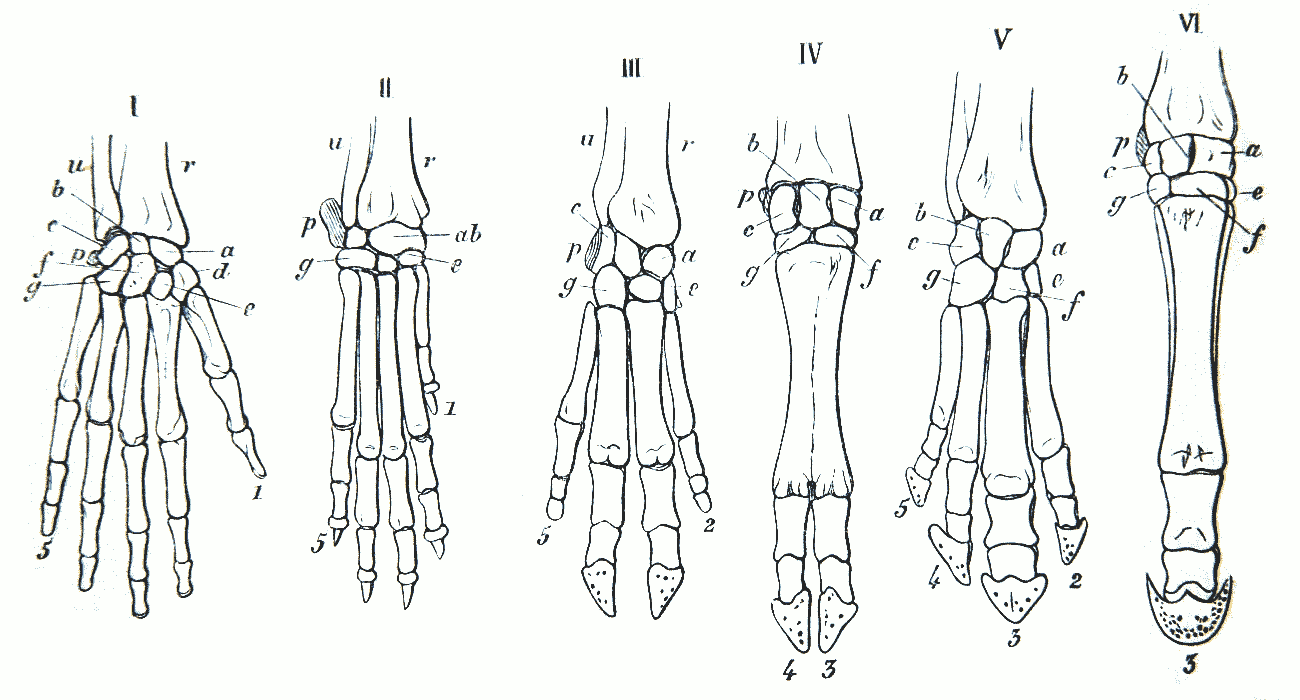Difference Between Homologous and Analogous Structures
Homologous structures occur in organisms that have the same shared ancestor, and the structures may have different functions. Analogous structures serve similar functions but arise in organisms that are not closely related and don’t share the same ancestor.

What is Homologous Structures?
Definition:
Homologous structures are those morphological features that are found in organisms that evolved from a common ancestor. This means that closely related species often do share homologous traits which are often of similar structure but may have the same or different function.
Degree of relatedness:
Organisms that share a common ancestor often form what is called a monophyletic group when classified based on phylogenetic relationships. Often this close relationship is seen in the fact that patterns of development during embryology are very similar among the organisms with homologous structures. For example, the embryo forms of all types of vertebrate animals look very similar in appearance.
Examples from the animal kingdom:
There are many examples of animals that have homologous structures. One classic example is the limbs of vertebrates, in which there is a basic pattern that is the same among all representatives, but that has become modified and adapted for different functions. The same bones, namely the humerus, radius, and ulna, can be seen in the arms of a bat, a bird, and a human, for example, even though a bat and a bird have wings while a human does not. Thus, the bones are modified for flight in some vertebrate animals, while in others they are used for walking and running.
Examples from the plant kingdom:
The leaves of some types of plants are examples of homologous structures. In some of the plants, the leaves arose from the same basic pattern and ancestor, but while some were modified to store water (e.g. cactus), others were modified to trap insects (e.g. Venus fly trap and pitcher plant).

What is Analogous structures?
Definition:
Analogous structures evolved independently to have the same or similar function, and thus may appear on the surface to have a similar structure, but often this is very different from one organism to another.
Degree of relatedness:
Organisms which have analogous structures are not usually closely related and do not therefore share a common ancestor, and so a phylogenetic tree would not be monophyletic. Instead each analogous structure evolved separately in each organism to serve the same or similar purpose. Although the structures are not homologous, they often adapt organisms for the same role, e.g. flight. Analogous structures can result from convergent evolution, for example the streamlined body shape of squid and fish both enable ease of swimming. Convergent evolution can often be seen when organisms in completely different parts of the world show the same morphological adaptations to environmental conditions.
Examples from the animal kingdom:
Analogous structures that are evident in the animal kingdom include the wings of birds and the wings of insects. The bird wings consist of hollow bones that evolved from primitive chordate animals. The insect wings evolved separately from the gill structures of primitive aquatic insects.
Examples from the plant kingdom:
African euphorbias have succulent leaves for water storage, similar to those of cacti found in the New World. However the modified storage leaves of these plants represent convergent evolution, having arisen separately from different ancestral plants. Thus, although the leaves have the same function in euphorbias and cacti, they have different ancestral origins.
Difference between Homologous and Analogous structures
Definition
Homologous structures are structures that evolve in living organisms that have a common ancestor. Analogous structures are those that evolve independently in different living organisms but have a similar or the same function.
Degree of relatedness among organisms
Organisms which have homologous structures are always closely related and share a common ancestral form. Organisms which have analogous structures are not closely related and do not arise from the same ancestor.
Developmental pattern
The developmental pattern in organisms which have homologous features tends to be very similar, and this is often evident when examining the embryos of these organisms. The developmental pattern in organisms which have analogous features tends to be very different.
Functions
Homologous structures may serve the same or different functions. Analogous structures always have the same or very similar functions.
Animal examples
The limbs of vertebrates are examples of homologous structures, and in fact the same bones are present, yet modified from one animal to another. The wings of insects and birds are examples of analogous structures with completely different evolutionary paths and origins.
Plant examples
Examples of homologous structures are the modified leaves of the pitcher plant, Venus fly trap, and cactus. Examples of analogous structures include the leaves of African euphorbia and cacti.
Table comparing Homologous and Analogous structures

Summary of Homologous Vs. Analogous Structures
- Homologous structures are found in living organisms that share a common ancestor and are thus monophyletic.
- Analogous structures are found in organisms that do not share a common ancestor.
- Organisms with homologous features often also have similar patterns of embryological development.
- Analogous structures always have similar or the same function, which is not always the case with homologous structures.
- Difference Between Rumination and Regurgitation - June 13, 2024
- Difference Between Pyelectasis and Hydronephrosis - June 4, 2024
- Difference Between Cellulitis and Erysipelas - June 1, 2024
Search DifferenceBetween.net :
Leave a Response
References :
[0]Image credit: https://commons.wikimedia.org/wiki/File:Gegenbaur_1870_hand_homology.png
[1]Image credit: https://upload.wikimedia.org/wikipedia/commons/thumb/0/08/Analogous_%26_Homologous_Structures.svg/500px-Analogous_%26_Homologous_Structures.svg.png
[2]Averof, Michalis, and Stephen M. Cohen. "Evolutionary origin of insect wings from ancestral gills." Nature 385.6617 (1997): 627.
[3]Editors of Encyclopedia Britannica. "Analogy". Encyclopedia Britannica, 2019, https://www.britannica.com/science/analogy-evolution
[4]Editors of Encyclopedia Britannica. "Homology". Encyclopedia Britannica, 2019, https://www.britannica.com/science/homology-evolution
